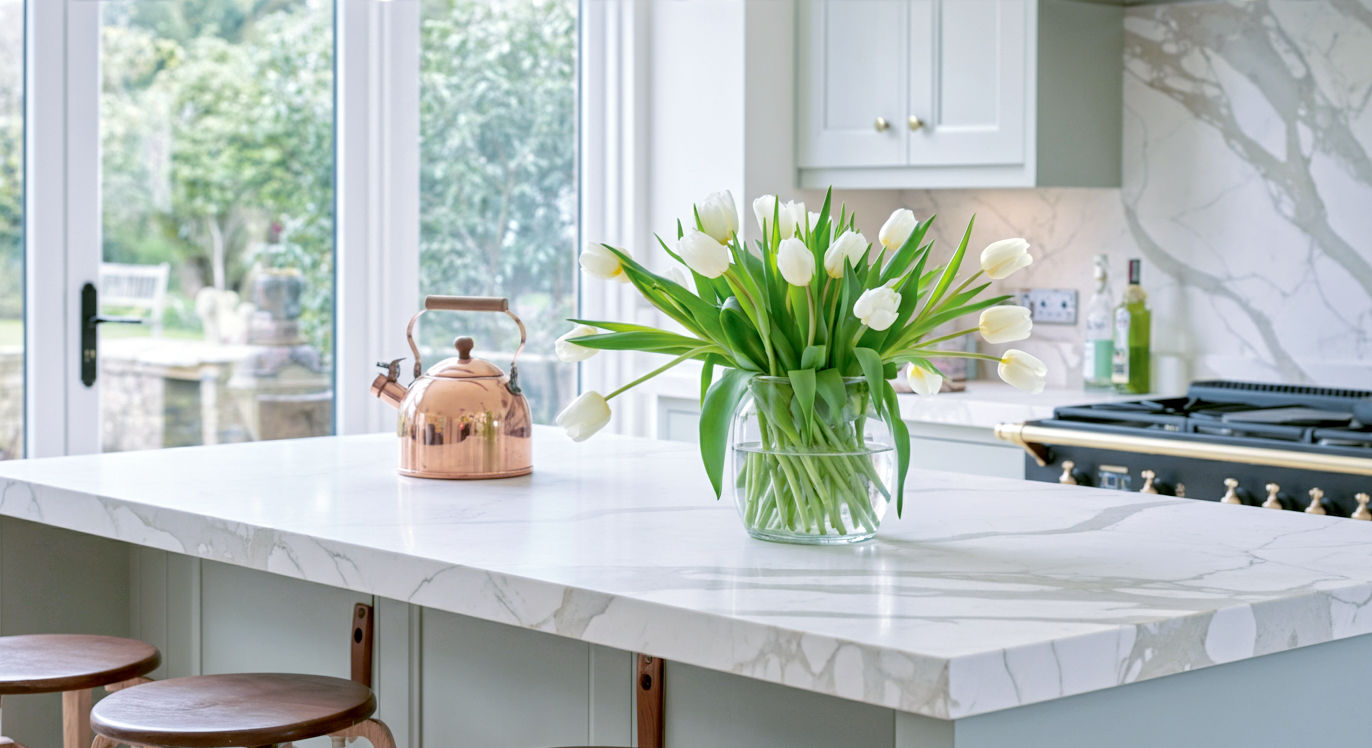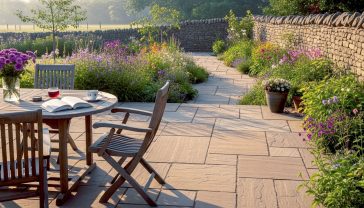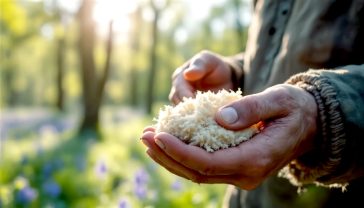The Marble Worktops Guide: A Definitive Handbook for British Homes
Your definitive guide to choosing, installing, and living with marble worktops in the UK. We explore costs, types like Carrara, maintenance, and alternatives.

This post may contain affiliate links. If you make a purchase through these links, we may earn a commission at no additional cost to you.
Step into almost any high-end British kitchen, from a sharp London townhouse to a cosy Cotswolds barn conversion, and you’ll likely find it. That unmistakable, milky-white surface, shot through with veins of grey like lightning frozen in stone. We’re talking about marble, of course. For centuries, it’s been the heavyweight champion of luxury materials, promising timeless beauty and a touch of class that few other materials can match.
But let’s be honest. You’ve probably heard the whispers, too. That it stains if you so much as look at it funny. That a stray splash of lemon juice will leave a permanent scar. That it costs a king’s ransom. Is marble a beautiful, lifelong investment or a high-maintenance headache waiting to happen?
Well, the truth is, it’s a bit of both. And in this guide, we’re going to unravel every myth and mystery. Think of this as a straight-talking chat about everything you really need to know before you commit to marble worktops. We’ll cover the dazzling highs, the worrying lows, and all the practical bits in between—from picking your perfect slab to keeping it looking gorgeous for years to come. So, pop the kettle on, and let’s get into it.
What Exactly Is Marble, Anyway?
Before we talk about putting it in your kitchen, it helps to know what it is. It’s not just a pretty stone; it has a fascinating backstory.
A Little Bit of Earth Science
Imagine ancient seabeds, shells, and skeletal bits of sea creatures all settling down over millions of years. This forms a rock called limestone. Now, imagine that limestone getting squeezed and heated deep within the Earth’s crust. This intense pressure and heat—a process called metamorphism—causes the calcite crystals in the limestone to grow and interlock, a bit like sugar crystals reforming into a solid block.
And voilà, you have marble. The famous swirls and veins you see are impurities like clay, silt, or iron oxides that were present in the original limestone. They get stretched and patterned during that intense transformation, which is why no two slabs of marble are ever identical. Every single worktop is a one-of-a-kind piece of natural art, shaped by millions of years of geological history.
The Two Main Finishes: Polished vs. Honed
When you start looking at samples, you’ll hear two words come up again and again: polished and honed. This refers to the surface finish, and it makes a huge difference to both the look and the practicality of your worktop.
- Polished Marble: This is the classic, glossy finish you probably picture in your head. The surface is ground and buffed until it’s highly reflective and shiny. It makes the colours and veins really ‘pop’ and gives a super luxurious, glamorous look. The downside? That shiny surface is more likely to show up scratches. And because the pores of the stone are a bit more open, it can be slightly more susceptible to staining if not sealed properly.
- Honed Marble: A honed finish is created by sanding the surface to a smooth, flat, but not shiny, state. It has a soft, matte or satin-like feel. Many designers and homeowners in the UK now prefer this look as it feels more modern, understated, and natural. The big practical advantage is that it’s much better at hiding scratches. It’s also slightly less slippery when wet. On the flip side, because it’s more porous than a polished surface, it can be more prone to absorbing spills, making a good sealer absolutely essential.
The Great Debate: The Real Pros and Cons of Marble Worktops
Okay, let’s get down to the nitty-gritty. Is marble the right choice for your kitchen? It depends on what you value most and how you live. Let’s lay it all out, warts and all.
The Pros: Why We Can’t Help But Love It
- Unmatched Natural Beauty: This is the number one reason people choose marble. It has a depth and character that man-made materials struggle to replicate. The unique veining, the subtle variations in colour—it’s a masterpiece in your kitchen that feels both grand and organic.
- It’s a Classic That Never Dates: Marble has been used for thousands of years in everything from Roman temples to Renaissance statues. It’s truly timeless. Unlike that avocado-green bathroom suite from the ‘70s, a marble worktop will look just as elegant in 20 years as it does today. It suits both ultra-modern and traditional country-style kitchens.
- It Stays Naturally Cool: Marble is a great conductor of heat, which means it quickly draws warmth away from things, leaving its surface cool to the touch. This is a lovely feature in a warm kitchen and is prized by bakers for rolling out pastry.
- Surprisingly Durable (in some ways): Whilst it has its weaknesses, marble is a strong, dense stone. It won’t break under normal kitchen use, and it’s very heat-resistant. You can place a hot pan on it without worrying about scorching or melting, though using trivets is always a good habit to protect the sealer and the stone itself.
The Cons: The Brutally Honest Truth
- It’s Porous (The Staining Issue): This is the big one. Remember how we said marble is made of calcite? Well, calcite reacts with acids. This means things like lemon juice, vinegar, red wine, and even some cleaning products can etch the surface. Etching is a chemical reaction that essentially eats away a tiny bit of the surface, leaving a dull, slightly rough spot. It’s more noticeable on polished finishes. Spills like coffee, tea, or oil can also soak into the stone’s pores and cause a stain if not wiped up quickly.
- It’s Relatively Soft (The Scratching Issue): Compared to granite or quartz, marble is a softer stone. This means it can be scratched by knives, chipped if you drop a heavy pan on an edge, or marked by dragging heavy ceramics across it. Using a chopping board is non-negotiable.
- It Requires Regular Maintenance: To protect against stains, marble worktops must be sealed. A good quality sealer acts like a protective jacket, sitting in the pores of the stone and stopping liquids from soaking in. This isn’t a one-time job. The sealer needs to be reapplied, typically every 6 to 12 months, depending on the type of sealer and how much you use your kitchen. It’s not a difficult job—you just wipe it on and wipe it off—but it is a job you have to remember to do.
- The Cost: There’s no getting around it; marble is a premium material. The price can vary wildly depending on the type, rarity, and thickness, but it’s almost always more expensive than laminate, wood, and even some granites and quartz options.
The Verdict? Marble is for people who value beauty and character above perfection. It’s for those who can embrace a little bit of ‘living’ in their kitchen. Over time, it will develop a patina—a collection of small etches, marks, and signs of use that tell the story of the meals and memories made around it. If you’re the kind of person who wants their worktop to look brand new forever, marble probably isn’t for you. But if you love the idea of a surface that evolves with your home, it could be the perfect fit.
A Field Guide to Popular Marble Types in the UK
Walking into a stone yard can be overwhelming. There are dozens of types of marble, all with Italian-sounding names. Here’s a quick guide to the most popular choices you’ll find in Britain.
Carrara Marble
This is the most common and generally the most affordable type of Italian marble. It’s the stone of Michelangelo’s David.
- Look: It has a greyish-white background with soft, feathery, and often quite linear grey veins. It’s generally more subtle and less dramatic than its cousins.
- Best for: People who want that classic marble look without the sky-high price tag. It’s incredibly versatile and works in almost any kitchen style.
Calacatta Marble
Often considered the most luxurious and sought-after Italian marble. It’s rarer than Carrara, which makes it more expensive.
- Look: It has a much brighter, purer white background. The real standout feature is the veining, which is thick, dramatic, and bold. The veins can be grey, but highly prized varieties like Calacatta Gold have beautiful golden or brownish tones mixed in.
- Best for: Making a statement. It’s perfect for a large kitchen island or a splashback where the dramatic pattern can be shown off.
Statuario Marble
Another premium Italian marble, Statuario is often mentioned in the same breath as Calacatta. It strikes a balance between the two.
- Look: Like Calacatta, it has a bright white background. The veining is typically a darker, more dramatic grey but it tends to be less dense than Calacatta, often featuring a mix of thick and thin lines.
- Best for: A crisp, high-end, and elegant look that feels both luxurious and timeless.
Other Marbles to Know
- Nero Marquina: A striking black marble from Spain with sharp, contrasting white veins. Fantastic for creating a dramatic, moody look.
- Verde Guatemala: A deep green marble from India, often with darker green or black veining. A bold choice that can look incredible in the right setting.
The Practical Guide to Buying Your Marble Worktop
So, you’ve weighed the pros and cons, and your heart is still set on marble. Fantastic. Here’s how to navigate the process of actually buying it.
Step 1: Set a Realistic Budget
The cost of marble worktops in the UK can range from around £300 per square metre to well over £800, and sometimes into the thousands for the rarest types. This price should include the template, supply, and installation. Remember to budget for cut-outs for your sink and hob, draining grooves, and any special edge details, as these all add to the final cost. Always get quotes from at least three reputable suppliers.
Step 2: Visit a Stone Yard (This is a Must!)
You can’t choose marble from a tiny sample or a picture online. You must go to a stone yard or supplier to see the full-size slabs for yourself. This is because the pattern and colour can vary hugely from one end of a slab to another, and from one slab to the next, even if they were cut from the same block.
When you’re there:
- Take your time. Walk around and see what catches your eye.
- Take samples home. Bring any kitchen door fronts, floor tiles, and paint swatches with you to see how they look next to the slab in the yard’s light.
- Reserve your specific slab(s). Once you’ve found the one you love, make sure the supplier reserves that exact slab for you. Get its serial number and take photos.
Step 3: The Templating Process
Once your kitchen base cabinets are installed, the stone fabricator will visit your home to create a template. They’ll use thin strips of wood or plastic, or a digital laser templating device, to make an exact pattern of your worktops. This is your chance to confirm every detail:
- Where the seams (joins) will be.
- The exact position of the sink and hob cut-outs.
- The overhang of the worktop from the cabinets.
- The type of edge profile you want (e.g., simple pencil edge, bevelled, or a more ornate ogee).
A word on bookmatching: If you have a large island or a long run of worktop that requires two slabs, you can ask for them to be ‘bookmatched’. This is where two adjoining surfaces are cut and polished to mirror each other, creating a stunning, symmetrical pattern. It costs more but the effect is incredible.
Step 4: Fabrication and Installation
Your chosen slab is then taken to the workshop where it’s cut to size based on the template using high-tech machinery. This is a precise process. A few weeks later, the installation team will arrive to fit the finished pieces. This is a heavy, difficult job that should only be done by professionals. They will level the worktops, fix them in place, and seal any joins with a colour-matched epoxy.
Living with Marble: Your Essential Care and Maintenance Guide
Your beautiful new worktops are in. Now, how do you keep them looking that way? Don’t panic; it’s easier than you think. It’s all about forming a few good habits.
Daily Cleaning
For daily wipe-downs, forget harsh chemical sprays. All you need is a soft cloth (a microfibre one is ideal) and warm water with a tiny drop of pH-neutral cleaner. Specialist stone cleaners are great, but a small amount of gentle washing-up liquid is also fine.
- Wipe the surface to remove crumbs and dirt.
- Spray with your gentle cleaning solution.
- Wipe clean with a damp cloth.
- Important: Buff the surface dry with a clean, dry cloth. This prevents water spots and streaks.
Dealing with Spills: Act Fast!
This is the golden rule of marble ownership. Because it’s porous, the key is to blot up spills as soon as they happen. Don’t wipe, as this can spread the liquid. Just gently blot with a paper towel. For acidic spills like wine or juice, getting to them within a few minutes can be the difference between a simple clean-up and a permanent etch mark.
The Big List of Things to AVOID
Your marble has enemies. Keep these far away from your worktops:
- Acids: Lemon juice, vinegar, wine, tomatoes, fizzy drinks.
- Harsh Cleaners: Anything with bleach, ammonia, or general-purpose cleaners that aren’t pH-neutral. These will dull the surface and damage the sealer. Abrasive cream cleaners are also a no-go.
- Oil: Cooking oil, butter, and greasy foods can soak in and leave a dark stain.
- Heavy Dragging: Don’t drag heavy pots, pans, or ceramic containers across the surface. Lift them.
Sealing: Your Best Friend
As we mentioned, sealing is crucial. Think of it as waterproofing your worktop. You can test if your sealer is working with a simple water test. Drizzle a small puddle of water onto the surface. If it beads up nicely, your sealer is holding strong. If, after a few minutes, the water starts to soak in and darken the stone, it’s time to reseal.
Resealing is a straightforward DIY job. You simply clean the worktop thoroughly, let it dry completely, and then apply the sealer with a cloth according to the manufacturer’s instructions.
Marble vs. The World: How It Stacks Up Against Alternatives
How does marble compare to the other big players in the UK worktop market?
| Feature | Marble | Quartz | Granite |
|---|---|---|---|
| Look & Feel | Natural, unique, timeless, classic luxury. | Man-made, consistent pattern, modern. | Natural, speckled/granular look, very varied. |
| Durability | Softer, can scratch & etch. Heat resistant. | Extremely hard, scratch & stain resistant. | Very hard, highly scratch resistant. Heat resistant. |
| Maintenance | Needs sealing every 6-12 months. Prone to staining/etching. | Non-porous, needs no sealing. Very easy to clean. | Needs sealing, but less frequently than marble. |
| Cost | Mid to very high. | Mid to high. | Mid-range. |
| Best For | Someone who loves natural beauty and will care for it. | Busy families who want zero-maintenance perfection. | Someone who wants a durable natural stone with lots of colour options. |
What about Porcelain? Porcelain or ‘sintered stone’ worktops are a newer alternative. They are man-made, incredibly tough, non-porous, and can be printed with very realistic marble patterns. They offer the look of marble without the maintenance, but some people feel they lack the natural depth and feel of the real thing.
The Final Word: Is a Marble Worktop Right for You?
Choosing a marble worktop is a decision of the heart as much as the head. You have to fall in love with its unique, imperfect beauty. You have to be willing to accept that it will show signs of life and use, developing its own character over the years.
It’s not the most practical, carefree material on the market—quartz undoubtedly wins that prize. But what it lacks in bomb-proof durability, it makes up for in soul. It connects your home to a deep geological history and a long tradition of craftsmanship.
If you’re looking for a sterile, perfect, never-changing surface, then you should probably walk away now. But if you’re looking for a living, breathing piece of natural art that will form the beautiful, timeless heart of your home, then there is simply nothing else like it.
Further Reading:
- The Natural Stone Institute: https://www.naturalstoneinstitute.org/ – An authoritative global resource on all types of natural stone, including technical specifications and maintenance guides.
- Houzz UK: https://www.houzz.co.uk/ideabooks – A brilliant resource for visual inspiration and articles from UK-based kitchen designers and architects.
- Royal Institute of British Architects (RIBA): https://www.architecture.com/ – Offers insights into architectural trends and the use of materials in British homes.
- Geological Society of London: https://www.geolsoc.org.uk/ – For those interested in the deep science behind how materials like marble are formed.






